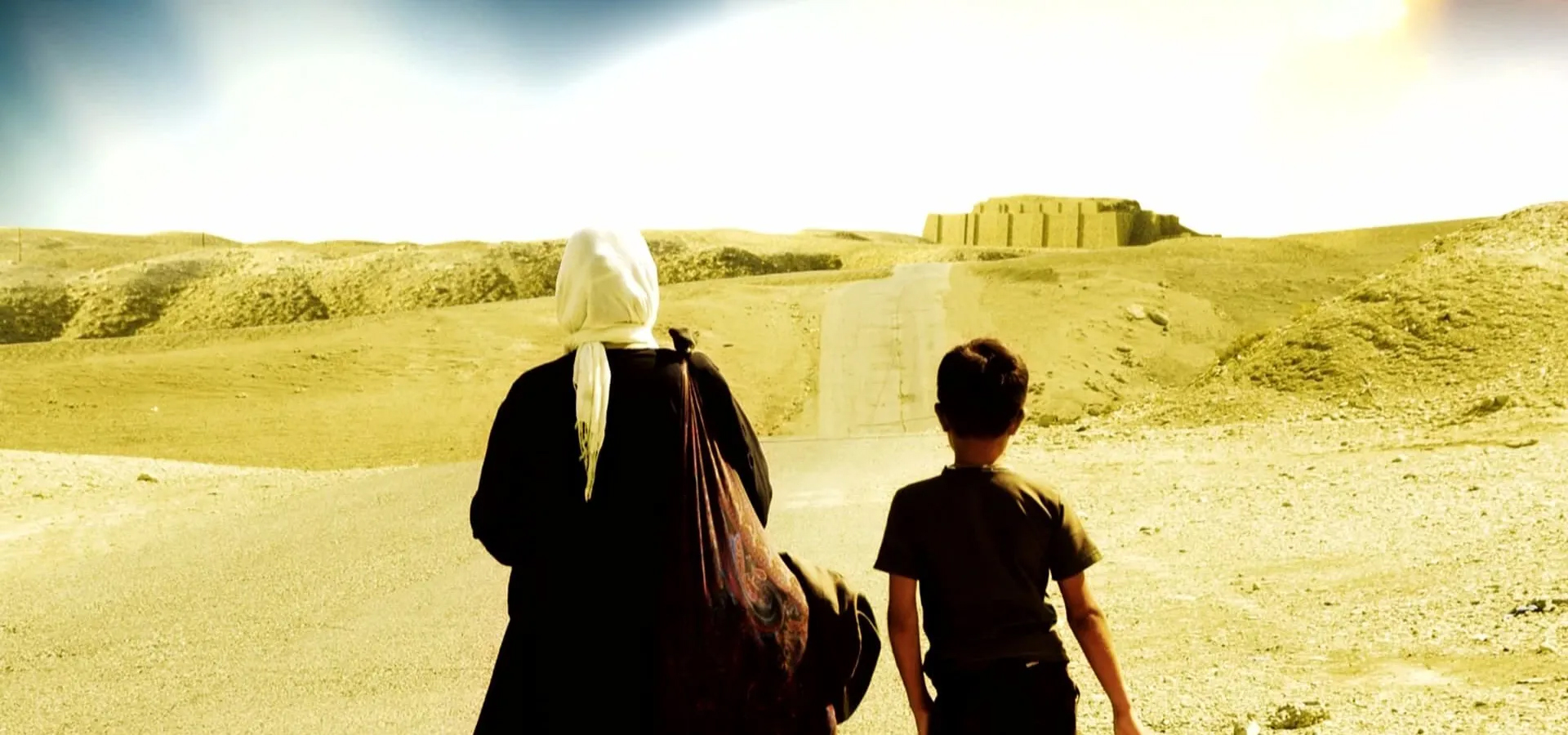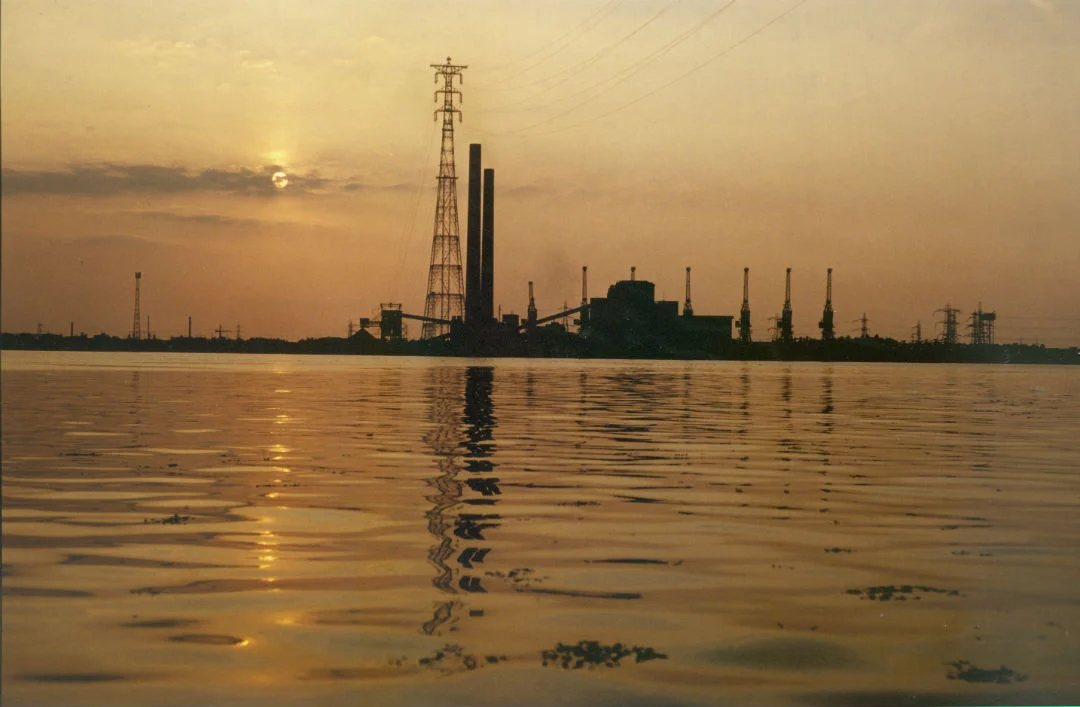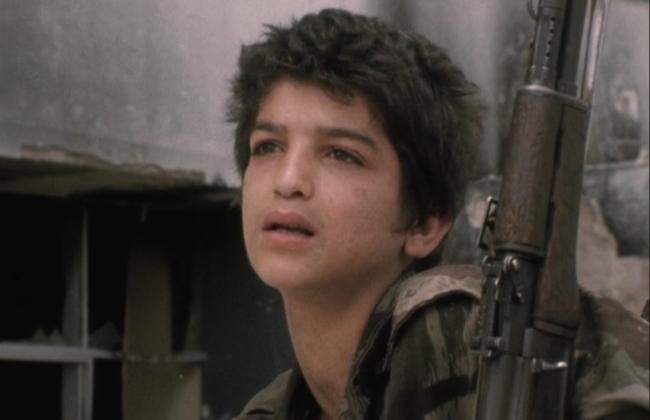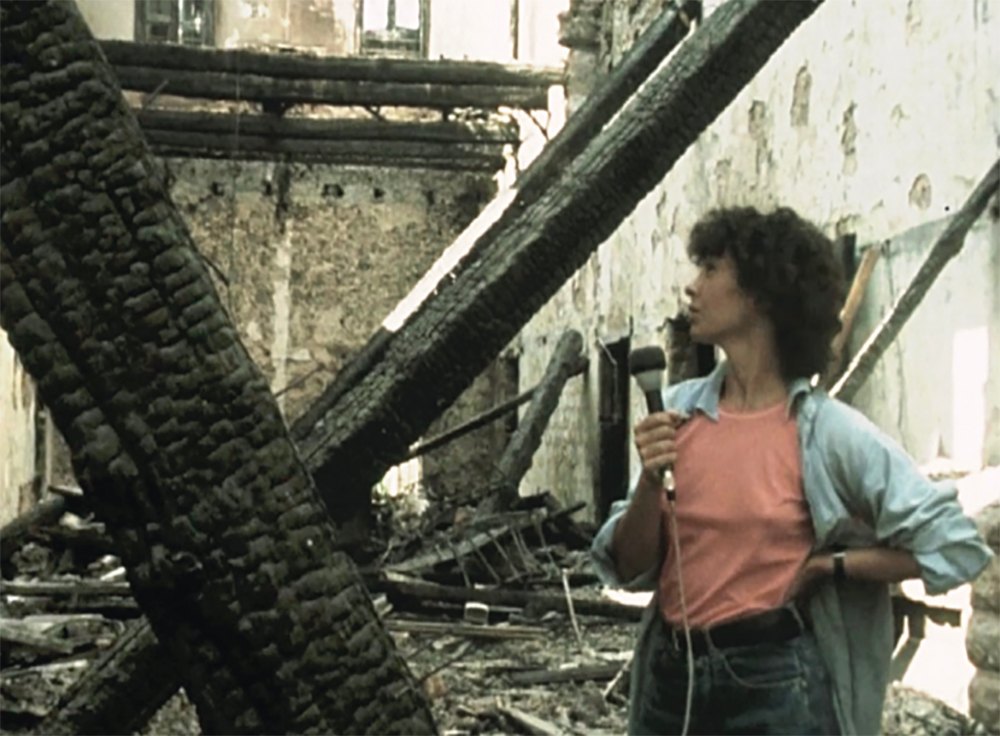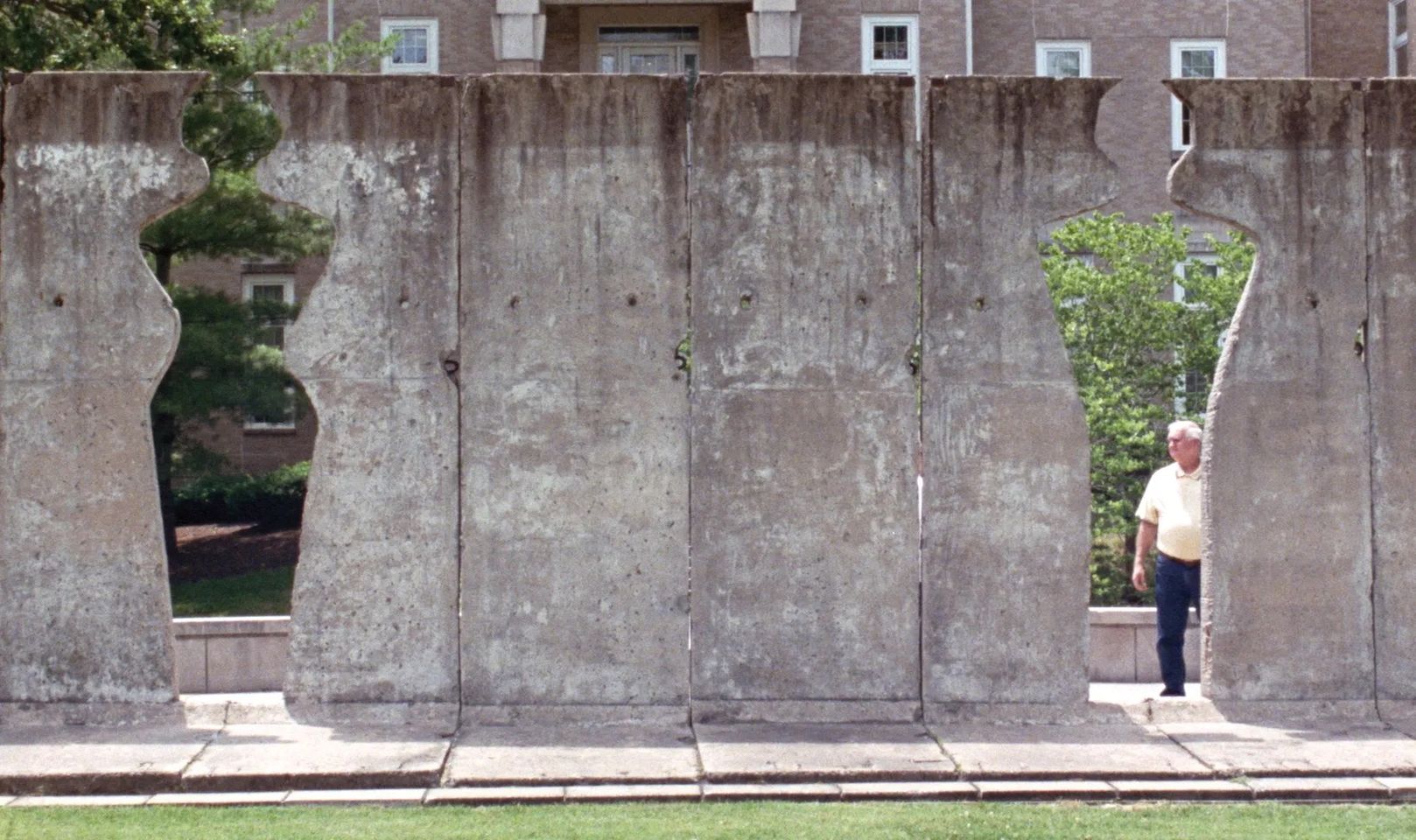
Fact versus fiction, past versus present – the films in this selection oscillate between the poetic, the humorous and the objective. Each film presents its own way of layering histories that have been drawn across landscapes and keeps the contemporary moment central. Whether they are remarking on past events, or blurring them with subjectivities, the commentary lies in the present. The American Sector takes us out of time and place; it a travelogue that visits the pieces of the Berlin Wall erected in cities across the United States. It questions what these historically charged monuments mean in the contexts they are placed in, what history they keep here, and what, by extension, do they tell us about the current situation? Son of Babylon, an epic road movie across Iraq, is a fiction feature displaying the histories of ruin in Iraq. Thames Film, a British gem, is an experimental documentary that extracts and relates layers of the River Thames’ history. And finally, Jocelyne Saab’s Beirut Trilogy are among the clearest examples of films about the Lebanese Civil War made during the fact. More than documentaries, these three films are subjective and documentative, showing details of war that only a journalist can pick up, but with a personal nuance that only an artist can relay.
The American Sector (2020)
70 min| US | English with English Subtitles
Director: Courtney Stephens and Pacho Velez
The American Sector takes viewers on a road-trip to visit fragments of the Berlin Wall scattered across the Unites States. With static filmed images of these pieces, we look at the various expected and unexpected places that these monuments have been installed. They range from presidential libraries to malls and private homes. The filmmakers, Courtney Stevens and Pacho Velez, speak to local people about what the monuments mean to them: icons of history, emblems of America’s role in the defeat of the Nazis, and the more elusive ideas of freedom, the fall of communism, and peace. Further to this, unexpected ideas on these ‘foreign’ political pieces allow for other meditations on US border control and migration.
Read Richard Brody’s review of how Courtney Stevens and Pacho Velez turned these historical monuments into ‘truth devices’ to reflect the present.
Son of Babylon (2009)
100 min | Iraq | Arabic and Kurdish
Director: Mohamed AlDaradji
In a sharp use of dramatic irony, this film is shot in 2008 at the end (so to speak) of the American presence in Iraq, presenting a clear visual of the vacuum after foreign troops pull out of the country. However, the film presents prior scenes of emptiness. It is set six years prior, in 2003, just after the fall of Saddam Hussein and the release of Iraqi prisoners of war. Ahmed, a 12-year-old boy, begrudgingly joins his grandmother in search of his father who had not returned home since the Gulf War of 1991. As they journey from one side of the country to the next, we see abandoned structures, larger than life, skeletons of what could have been. The viewer scans backdrops and walks through areas, from the ancient Borsippa Ziggurat to contemporary mass graves and unfinished construction sites, signifying the continuous stripping of Iraq. This film is a heart-wrenching epic journey into wars, torture and all the shadows that live in the cracks.
Thames Film (1986)
66 min | UK | English with English Subtitles
Director: William Raban
Wiliam Raban, the maker of this film, is known for works that bring together various images and narratives into one unfolding work. Thames Film tells the history of the river by bringing together footage shot contemporaneously by Raban, with thirty years’ worth of archival footage and glimpses of paintings, with a narration of texts more than two hundred years old. Narrated by John Hurt, the film illustrates the natural and man-made changes along this river by comparing renditions of place made over centuries. (See also the psychogeography films of Patrick Keiller in the next chapter.)
Read this essay exploring documentaries about cities, with Thames Film at its heart.
Jocelyne Saab’s Beirut Trilogy
Beirut, Never Again (1976)
35 min| Lebanon| English
Director: Jocelyn Saab
shot over six months between 1975 and 1976, shows the inner-city happenings in this early period of the Lebanese civil war. Saab follows the daily destruction in the centre of the city, roaming around with her camera every morning between 6–10 a.m., while the militias on both sides sleep. Here we see bombed out buildings and people, especially the youth, whose futures are now enmeshed in conflict. The mix of the natural sounds of war with poetry by Etel Adnan creates a poignant portal.
Letter from Beirut (1978)
52 min| Lebanon| English
Director: Jocelyn Saab
In this second installation of the trilogy, Jocelyne Saab takes us to the corners and crossroads in Beirut, then further along the borders of Lebanon. Like a travelogue through a city in the middle of war, Letter from Beirut takes us through a city divided. She observes details as signs of the situation around them that excavate past and present histories. People share their experiences and detail how the new city lines have affected their lives. Conversations give us an idea on how identity has been affected by these divisions. Visits to international military forces show us the ongoing colonial presence in the background, now strengthening with UN vindication. She goes around like a flaneuse-journalist visiting her own home and finding disruptions as she goes along.
Beirut, My City (1982)
28’ min| Lebanon| English
Director: Jocelyne Saab
Following the Israeli invasion of Lebanon, Saab returns to her city to see that her own house, a 150-year-old structure, has been burned to a shell. A pivotal year in Lebanese and Middle Eastern history, Saab’s camera witnesses the Palestinian Liberation Organisation’s withdrawal from Beirut as Israeli warplanes hover above. We continue to see how the city is transforming in real time amidst endless violence.
Read this chapter on Jocelyne Saab’s artistic journalistic films, in Negotiating Dissidence: The Pioneering Women of Arab Documentary, edited by Stefanie Van de Peer, online at: https://books.google.co.uk/books?id=sjZYDwAAQBAJ&pg=PT84&source=gbs_toc_r&cad=2#v=onepage&q&f=false

